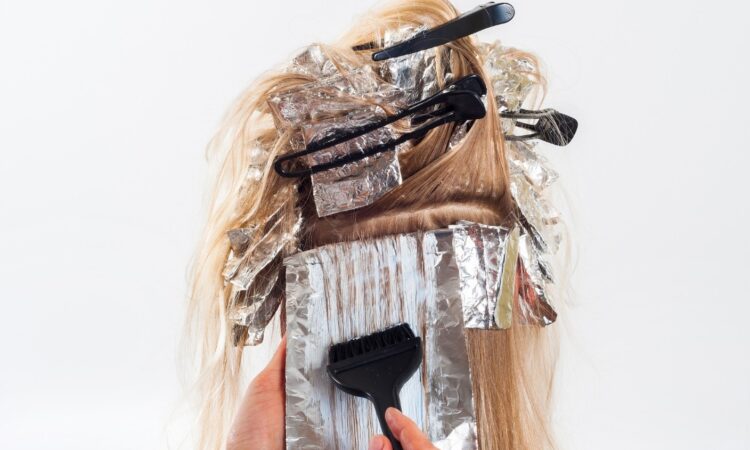Title: Mimicking Natural Human Hair Pigmentation with Synthetic Melanin
Authors: Claudia Battistella, Naneki C. McCallum, Karthikeyan Gnanasekaran, Xuhao Zhou, Valeria Caponetti, Marco Montalti, and Nathan C. Gianneschi*
Journal: ACS Central Science
Year: 2020
Article: https://pubs.acs.org/doi/10.1021/acscentsci.0c00068
Cover image: https://pixabay.com/photos/hair-color-coloring-brush-white-1744959/ by artursfoto
People have chosen to color their hair for generations, especially as they age when hair loses its natural color and turns to gray or white. Ancient Egyptians even used henna plants to darken their hair color! Modern techniques for longer lasting hair dyes were developed by L’Oreal in the early 1900s and are broadly used with over 50% of the population in developed countries have dyed their hair. Much of the chemistry used to dye hair remains unchanged, but the chemicals have been shown to be irritants and cancer-causing. This is harmful to the hair stylists in salons who are exposed routinely and the clients receiving the treatments. A few recent attempts have been made to develop new methods, but they struggle from issues including long reaction times, high cost, lack of color variety, or toxicity due to heavy metals and strong oxidizers. Researchers in this study have developed a promising new technique that overcomes these challenges.
The structure of hair is mostly composed of the protein keratin, but the color is given by melanin distributed in the middle layer of the hair between fibers of keratin. The color is transferred into the hair through dark melanin granules as it grows. Here, synthetic production of melanin has been achieved beginning with commercially purchased dopamine, then oxidizing and polymerizing into melanin particles. Instead of using harsh chemicals, these researchers developed a simple and safe technique using an alkaline solution where the polymerization occurs using ambient oxygen to darken the color of the particles produced (Figure 1).

Citation: ACS Cent. Sci. 2020, 6, 7, 1179-1188
Then these melanin nanoparticles must be applied to the hair and different conditions were tested to understand how the solution changed the color of the dyed hair. Usually a base is used to swell the hair cuticle and allow the color to penetrate the hair. The common base used is ammonium hydroxide at 3% concentration and it was compared to 6% ammonium hydroxide, NaOH, CuSO4 and H2O2 as additives. An example of the treatments and color variety can be seen in Figure 2.

Citation: ACS Cent. Sci. 2020, 6, 7, 1179-1188
To quantify their findings the researchers used UV-Vis spectroscopy to monitor the color of the final hair. They were able to achieve black, dark brown, and golden-brown hues using different concentrations of solutions. They were also interested in how the nanoparticles adhered to the hair so they used scanning and tunneling electron microscopy to observe the coating of nanoparticles on the hair surface (Figure 3). This was an exciting discovery because it did not damage the underlying hair, as some harsher treatments do.

Citation: ACS Cent. Sci. 2020, 6, 7, 1179-1188
The final method that they settled on took two hours at normal body temperatures, which is considered applicable in a salon or home setting. The use of a base and H2O2 can control the color, with a higher concentration of base leading to a darker color, and addition of H2O2 changing to a warmer gold color. The colors looked like natural hair colors and existing commercial products, survived 18 washes and did not change the underlying structure of the hair. This is an exciting technology because it is less harsh than current hair dyes, but still produces great results, that could be safer for hair stylists and clients alike

